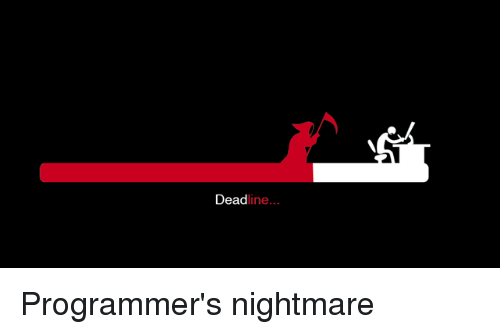Contents
What is Net legacy Nightmares
Despite predictions about the radical nature of the Internet, Net legacy Nightmares is IT organizations are studying the old Maxim “the more things change, the more they live.” Project managers know that when they build a new web application, they succumb to the pressure of “Internet time”, in front of basic software engineering fundamentals.

In the good old days, two to three years were required to come up with a new mainframe program in Cobol. If you were lucky, the first developers would walk around for a second few years, and it might take a little longer before the business situation changes to replace major software modifications.
Later, everyone felt that they were working with a legacy system, whose internal logic was not understood by anyone. These days, we measure everything in dog years; Thus, each phase of the application’s life was reduced to months and could be designed on a “death-march” schedule, so that the company first came to market. Success in the initial phase justifies an IPO (or promotion and bonus at a more traditional firm), which will happen when developers cash out their stock options or bonus tests and disappear for greener pastures. Within a month or two, the market has made changes that require significant changes and no one knows how the code works. Voilý – yet another legacy system!
Net legacy Nightmares Topic
We have never resolved this issue before, and it is perhaps naive to imagine that we could do this in the pure world. But since the Internet’s compressed time scale as well as the legacy-making process is unavoidable, it means that many senior managers are still reeling from the impact of legacy code, perhaps with a greater sense of insistence on being less. Issue, if not completely removed.
In an ideal world, we emphasize a formal, disciplined analysis and design process, carefully combined with documentation. However, Internet-time projects are certainly not part of this ideal world, and it is unrealistic to assume that we can see much discipline in measured development efforts over months or weeks.
But this does not mean that we should give up discipline and order. One of the biggest issues with legacy systems is the lack of documentation. Remember that the purpose of documentation is to transfer knowledge from the original programmer to the maintenance programmer. This is called dual programming: two programmers work simultaneously on each program part. In the past, we did this sometimes because we did not have enough terminals. We understand that it also helps in peer review and knowledge transfer; For example, from a senior programmer who is likely to meet a junior developer while leaving a job, who is expected to help with maintenance.
Or consider videotaping all important design review meetings, joint application development sessions, as well as other meetings in which technical aspects of the system are discussed. Assuming an iteration, the prototype approach is used, schedule a mini-postmortem after each new prototype is implemented and then videotape it for posterity. Use voice-recognition techniques to transmit the musical content of meetings, then index those documents so that important information can be quickly tracked down to future generations. None of these strategies are correct, but they are better than ignoring the issue. If nothing else, Y2k taught us that unspecified legacy systems survive on results. It would be nice if we could stop it in the brave new world of the net.
Microsoft Net legacy Nightmares
Nightmares for Microsoft No you can conquer Microsoft. Nobody will. Nobody is large enough or powerful enough.
- Four years back – nay, even a couple of decades back, few would believe that Microsoft could be defeated. Now, at least severe diminishment appears to be inevitable. This isn’t a story of struggle with a powerful rival – but a narrative of stumbling in unknown terrain, of unrelenting attack by a swarm of adversaries old and new, bigger and smaller, all wielding weapons that are unknown.
- End of the PC Era – not moving away, but not where the activity is.
- Linux – since Unix becomes”Large Linux”.
- Java – collapse of Microsoft’s strategy to kill Java hurts
- Obsolescence of all Windows – its own layout pubs it in the upcoming
- The online – it resists getting a Microsoft property
- Safety Problems – they’re”Microsoft particular”.
- IBM, Sun and Oracle – gain immunity from over
- Sony – the danger from under
- Foreign Exchange – patriotism, feeling and cash.
- Financial Fragility – all that money rides a bubble
- Anti-trust Action Continues – linking the beast’s hands
- 140 impending lawsuits – many will influence the anti-trust choice.
- Microsoft Has No Friends
- reduction of leading executives – most of the best titles have gone.
- Slow sales of Windows 2000 – many clients can live with what they have.
- Technical Stagnation – a lot of money cow to shield from innovation.
- InfiniBand – New I/O favors clustering
- The Very Best and the Brightest – recruiting Issues.
- Microsoft’s Public Picture – past, but definitely not the least.
Net legacy Nightmares FOR DEVELOPERS DURING PROGRAMMING
Each kind of job has its benefits and disadvantages, which can be obvious. The job of IT engineers appears to be an easy one, coders have opportunities to work remotely, from all around the world, have a possibility to mix working and vacations and earning a excellent money for that. Is this job so perfect, and there are no disadvantages? I guess a lot of programmers would assert and claim that despite all of the benefits there are items that can be called as coders value nightmare. Let us review what can be so awful in the work of IT engineers.

BUGS APPEARING AT THE WRONG TIME
Of course, there’s never a good time for bugs, particularly if those happen after weeks or even months of hard working process, which includes testing and development. So, at the moment if the final version is presented to the staff and clients, bugs appear, or even worse, when it seems after closing release to the client, and the company receives a lot of negative feedback. Even if it is a little one, customers will harass you as in the event that you’ve killed a baby.
FIXING ANOTHER PROGRAMMER’S BUGS
You will not have to do this only if you’re fortunate, very lucky. However, in many cases, you will be asked to repair someone else’s bugs. Mostly it occurs if you’re new in the business or after someone abruptly stops the undertaking, without completing it correctly and creating a handover.
FIXED ONE BUG — CREATED MORE BUGS
An additional dreadful second in the programming process is if you fix one bug which created more bugs. I think this feeling is typical for everyone, not only for coders when you find a remedy for a single issue but a lot of different issues happen to be. Even in the programming, the newest bugs aren’t really new, just old and concealed ones, so anyhow it should have been repaired for effective launch and work of the application. But that’s a frustrating moment.

BUG EXISTING IN THE LIBRARY YOU DEPEND ON
There’s something more worth compared to the scenarios described above, when you are tired from fixing bugs, and the app does not do the job well enough still. In this circumstance, you might feel useless and hopeless, and not able to improve the scenario. There still are a Couple of ways to influence it:
Ask the programmer of this library to fix the bug, naturally, that will take some time. But you’re not the only one the only one facing this dilemma, so the help will probably be useful for other developers.
But if you are certain about your proficiency — attempt to repair it yourself. This activity Isn’t the easiest one to perform, but it may enhance your level since IT engineer or cause Plenty of problems for everyone else working with the Identical library
Last but not least solution to the problem is to look for another library. Maybe there is another one to use, or perhaps you construct your personal code.



